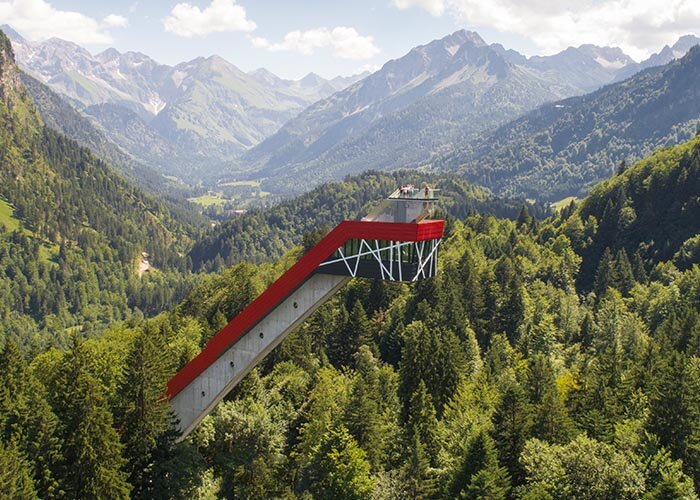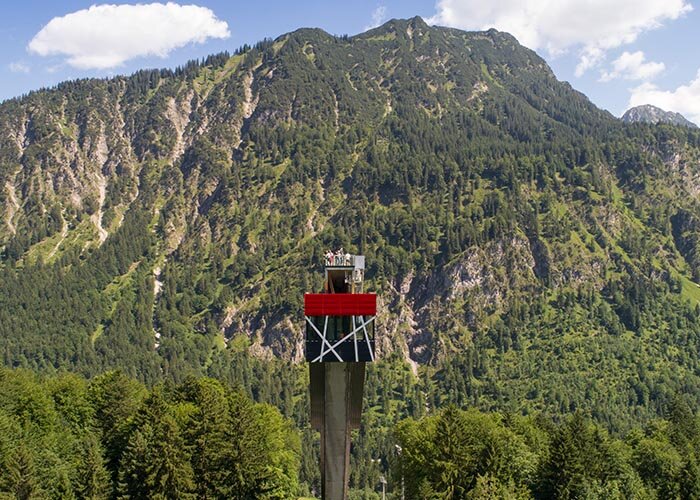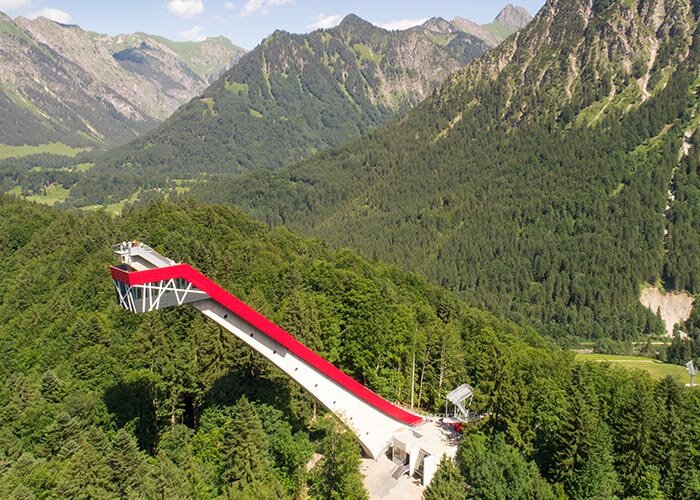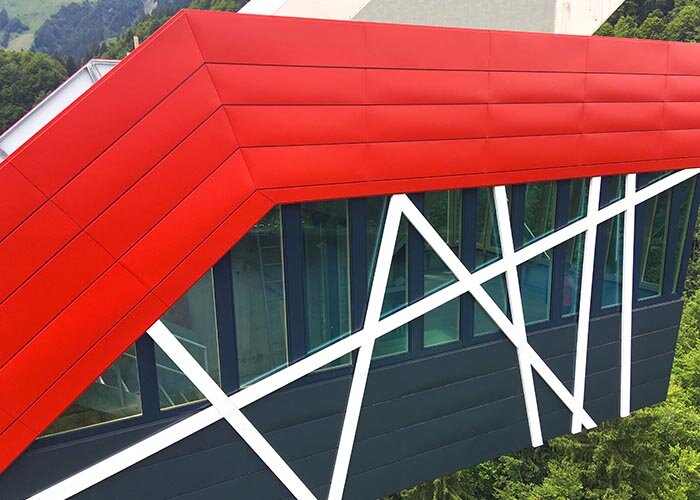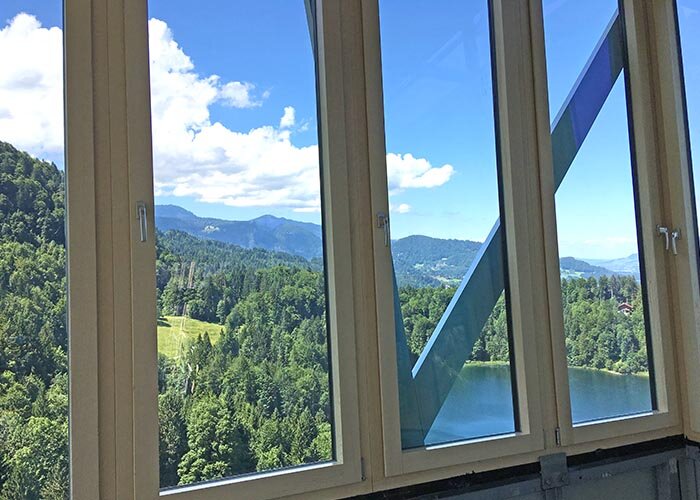
Eagle's nest at the leaning tower
Leap into new times
Heini Klopfer, patron saint of the Skiflugschanze Oberstdorf, was not only a pioneer of ski jumping but also of ski jump construction. As an architect, he planned over 250 ski jumps - including Germany's only ski jump. In 1950, he inaugurated the new structure himself with a jump of 90 meters. A few weeks later, the first competition took place in front of 100,000 spectators. In 1973, the wooden construction was replaced by a new prestressed lightweight concrete facility. In the run-up to the 2018 Ski Flying World Championships, the sports facility with its characteristic free-standing approach tower underwent a general overhaul. The Allgäu-based architectural firm Renn, followed in the footsteps of ski jump builder Klopfer. They already had experience in ski jump construction: for example, the jumping stadium for the Winter Olympics in Sochi bears the signature of Hans-Martin Renn. "It was still a dream to be allowed to plan a ski jump - and right in front of our own doorstep," says the architect.
Elegant precision landing
A central element of his planning was the "Eagle's Nest" at the tower head. The all-round glazed "pent¬house" at a height of 72 metres offers a fantastic view over the Freiberg Lake and Nebelhorn. In this cosy nest the ski-jumping eagles (ADLER) are preparing for their jump. Hans-Martin Renn took up this idea in the design, which in an abstract form reminds of a bird of prey's nest. He placed the construction of the glass and facade elements of this eagle's nest in the reliable hands of the Allgäu company Bietsch in Ofterschwang. The family business specializes in complex large-scale projects - "We are specialists for everything that is demanding and challenging," says junior boss Franz-Josef Bietsch, and the ski jump project in Oberstdorf should not disappoint him in this respect.
One of the challenges was to assemble the glass room at a lofty height with the help of a 100-meter truck-mounted crane - including unfavourable wind conditions. To make this assembly possible, the almost 14-meter long and eight-meter wide cabin was prefabricated in five large elements. Bietsch's team, secured with climbing harnesses at a height of 80 meters, assembled the cabin in a record time of three days - supervised by Franz-Josef Bietsch himself, who had constructed a special crane suspension during a weekend shift.
One of the challenges was to assemble the glass room at a lofty height with the help of a 100-meter truck-mounted crane - including unfavourable wind conditions. To make this assembly possible, the almost 14-meter long and eight-meter wide cabin was prefabricated in five large elements. Bietsch's team, secured with climbing harnesses at a height of 80 meters, assembled the cabin in a record time of three days - supervised by Franz-Josef Bietsch himself, who had constructed a special crane suspension during a weekend shift. For the optimal protection of the eagle's nest exposed to wind and weather, Bietsch relied on a wood-aluminium construction, which he refined with coatings from ADLER: The spruce wood was first impregnated with Aquawood TIG HighRes - this primer stabilises the wood component lignin and provides high UV protection. Finally, the intermediate coating Aquawood Intermedio ISO was topcoated with the thick-coat glaze finish Aquawood Q10 which provides perfect protection and a friendly, natural look.
Highest style points
Only ten months after the start of the reconstruction work, the ski jump was inaugurated in February 2017 and received top style points not only from the ski jumpers. The people of Oberstdorf are also proud of their landmark: "God's index finger", "Lighthouse in the middle of the mountains", "Leaning Tower of Oberstdorf": The respectful nicknames make it clear that the Heini-Klopfer ski jump is much more than just a sports facility. It is an architectural monument that leaves its mark on an entire region.
© by adler-lacke.com
